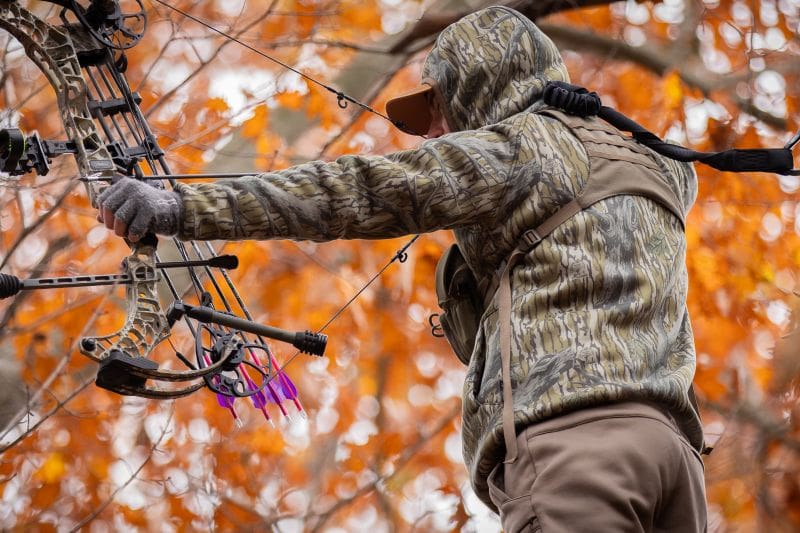For as long as I can remember, hunters have argued about how much the moon really affects deer movement. In my thirty-five years chasing whitetails, I’ve heard every theory, swapped stories with old-timers, watched countless TV shows, and read every article I could find about hunting under a full moon. Not long ago, I was one of those hunters who’d look up at a bright night sky and say, “The deer are moving tonight.” But over time, after digging into research and listening to biologists on podcasts, I realized there’s little actual evidence that the moon phase has much to do with deer behavior. It’s kind of like finding out Pluto isn’t a planet after all, something we believed for years, but science says otherwise.
While some dismiss it as a myth and untrue, others swear by the calendar hanging in their camp that predicts the “best days to hunt” based on moon phases. October, with its shifting food sources and rising rut activity, is often the month when hunters start to notice changes in deer behavior. The big question is: Does the moon really influence when and how deer move?

How Deer Use the Moon
Whitetails are driven by survival instincts like seeking food, breeding, and avoiding danger. Sunlight, temperature, and hunting pressure all affect their movement. However, the moon, with its changing phases and positions overhead and underfoot, also plays a subtle role. For years, the idea has been that deer change their feeding and movement patterns based on how much moonlight is available during the night.
When the moon is bright and full, deer usually spend most of the night feeding and are already bedded down before sunrise. During a dark new moon, though, they tend to stay on their feet longer in the morning and start moving earlier in the afternoon. Hunters who pay attention to these shifts can time their hunts to catch deer on the move during those key daylight hours.
What the Research Shows
Studies have produced mixed results. Biologists largely agree that the moon does not override weather, food availability, or the rut when it comes to deer movement. However, research from institutions such as the QDMA (Quality Deer Management Association, now the NDA) and state wildlife agencies shows subtle correlations.
- Full Moon: Movement peaks late at night, often resulting in slower mornings but more activity during midday.
- New Moon: Deer movement may be more evenly distributed, giving hunters a better chance of catching deer moving in daylight.
- Overhead & Underfoot Moon Times: Some hunters, supported by observational data, believe that when the moon is directly overhead or underfoot, deer are more active. These “minor” and “major” feeding times appear in solunar charts, which many outdoorsmen swear by.
While science suggests moon phases don’t drastically change deer habits, hunter observations often reveal patterns worth noting. Combined with weather fronts and hunting pressure, the moon can be an extra piece of the puzzle.

Best October Moon Days to Hunt
October has always been one of the most fascinating months for deer hunting, a true time of transition. Early in the month, bucks are often still running in bachelor groups and following their late-summer feeding patterns, focusing on acorns and agricultural fields. By late October, the first signs of pre-rut activity begin to show. Weather can swing wildly, too. Early October days might hit ninety degrees, while the month often ends with the season’s first frosts or even a touch of snow. With so many changes happening at once, it’s no wonder October keeps hunters on their toes.
During the early October new moon, the nights tend to increase daylight feeding activity, making morning hunts finally productive. Many hunters avoid morning hunts early in the season to prevent spooking deer that have been feeding all night. When the nights are darker, deer usually feed more during the day, so setting up near food sources can really pay off. When the full moon hits in mid-October, deer activity often slows down in the mornings. Even so, it’s worth sticking it out through the late morning and early afternoon, this is when bucks start moving between bedding areas while does are still feeding. As the month goes on and the moon wanes, daylight grows shorter, and deer movement steadily increases with the rut approaching fast. This stretch is a great time to focus on afternoon hunts near scrapes and travel corridors, where the action can really heat up. By the end of October, as the rut nears full swing, it’s smart to be in the stand whenever you can. When bucks hit peak rut, movement can happen at any hour, day, or night. That’s why many hunters consider Halloween one of the best hunting days of the year.
Putting It All Together
The moon isn’t a magic switch for deer movement, but it can provide insight into subtle behavioral changes. Weather, wind, and pressure should always be the primary factors when planning a hunt. Still, paying attention to the moon, especially in October, can help hunters stack the odds in their favor.
The best strategy is to use moon data as one of several tools in your toolbox. If the calendar or hunting app, such as HuntStand, OnX, or HuntWise, indicates that deer should be on their feet at midday, and conditions are right, it’s worth climbing into a stand. As with all aspects of hunting, the more time spent in the woods during October, the better your chances, moon or no moon.


